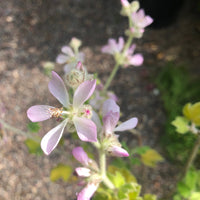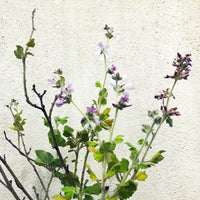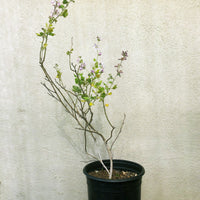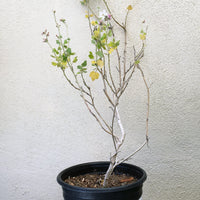



Malacothamnus clementinus (San Clemente Is. bushmallow)
San Clemente Island bushmallow
A rare species of flowering plant in the mallow family that is endemic to San Clemente Island. It can reach a height of up to a five feet hight. The plant became a federally listed endangered species in 1977 when it was limited to a single population nearing extinction due to herbivory by the feral goats which once infested the small island. A bushy shrub with a thin, multibranched stem coated in long, fine hairs and Pinkish-white to lavender flowers on spikes that grow early spring to most of year in mild climates.
This plant produces a pollen that can produce an allergic reaction.
Cut back in winter. Takes heavy pruning.
Prune back after blooms to prevent woody look. Mallows spread by underground runners and form colonies.
-Full sun, some shade
-Tolerates a wide variety, including clay and sand
-Drought tolerant
-Attracts butterflies, hummingbirds, and birds
-California Native
This content type will accept rich text to help with adding styles and links to additional pages or content. Use this to add supplementary information to help your buyers.
You can use product metafields to assign content to this tab that is unique to an individual product. Use tabs to highlight unique features, sizing information, or other sales information.
San Clemente Island bushmallow
A rare species of flowering plant in the mallow family that is endemic to San Clemente Island. It can reach a height of up to a five feet hight. The plant became a federally listed endangered species in 1977 when it was limited to a single population nearing extinction due to herbivory by the feral goats which once infested the small island. A bushy shrub with a thin, multibranched stem coated in long, fine hairs and Pinkish-white to lavender flowers on spikes that grow early spring to most of year in mild climates.
This plant produces a pollen that can produce an allergic reaction.
Cut back in winter. Takes heavy pruning.
Prune back after blooms to prevent woody look. Mallows spread by underground runners and form colonies.
-Full sun, some shade
-Tolerates a wide variety, including clay and sand
-Drought tolerant
-Attracts butterflies, hummingbirds, and birds
-California Native




